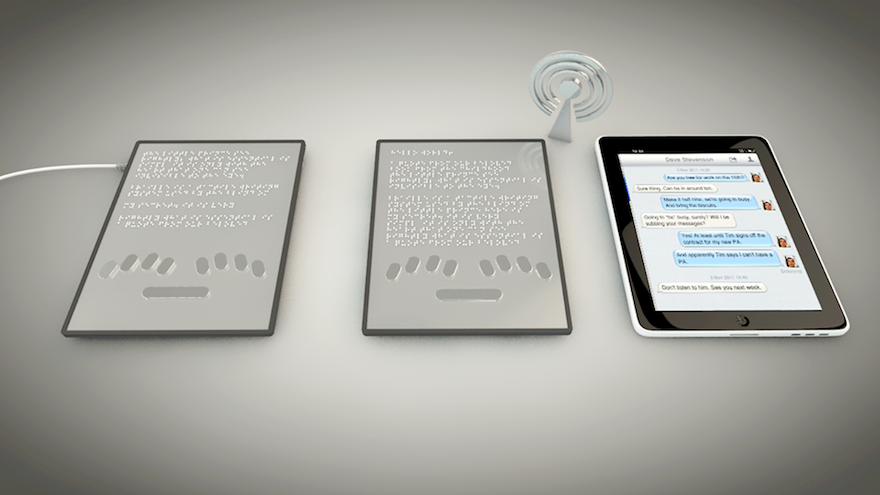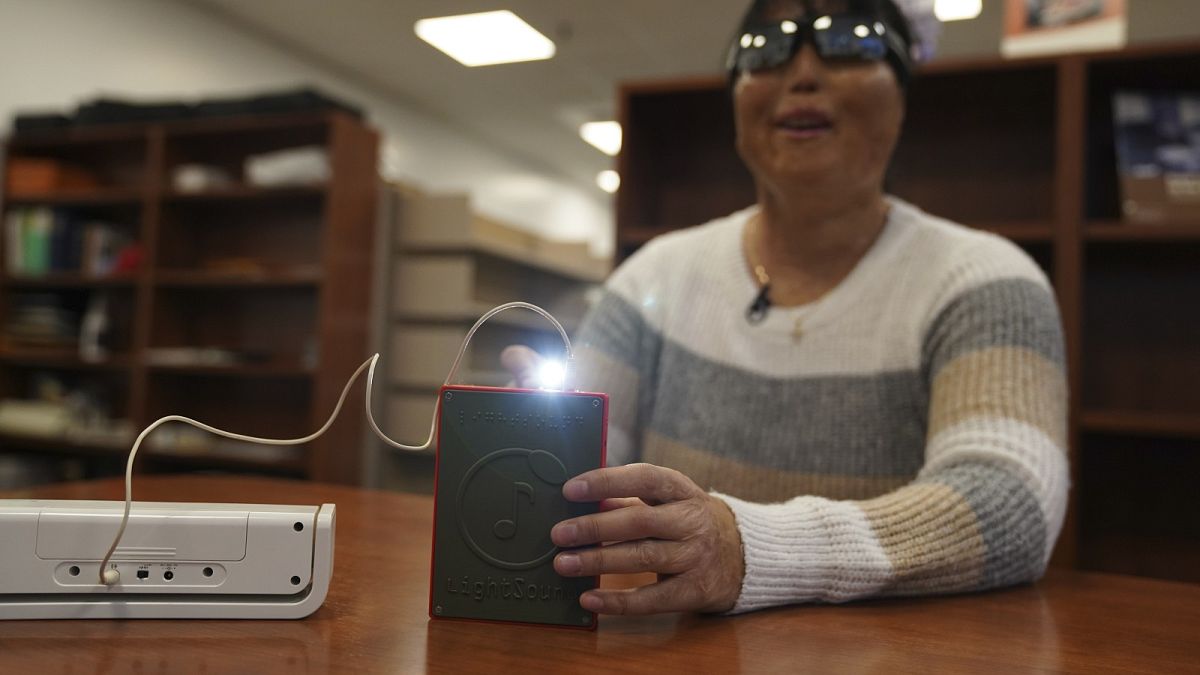Empowering Independence With Assistive Technology for the Blind
The assimilation of assistive modern technology right into the lives of people with visual problems stands for a significant improvement in advertising self-reliance and self-sufficiency. From innovative display readers to innovative clever walking canes, these tools not just enhance daily navigating and interaction however also empower users to involve meaningfully in different elements of life. As we check out the myriad advantages and real-world applications of these innovations, it becomes essential to analyze the hidden elements that add to their performance and the potential for future growths in this essential field.
Overview of Assistive Modern Technology

The development of assistive technology is grounded in principles of inclusivity and empowerment. Innovations in software program, equipment, and sensory improvements give individuals with options customized to their certain requirements. From screen readers that convert text to speech, to responsive gadgets that communicate information with touch, these tools change the way people engage with their environments.
Along with sensible applications, assistive innovation promotes greater social addition and participation in different sectors, including education and learning and work (AI-powered visual aids). As r & d remain to develop, the possibility for assistive innovation to additionally enhance the lives of aesthetically damaged individuals continues to be promising, leading the method for an extra fair society where everybody can prosper
Kinds of Assistive Gadgets
A range of assistive gadgets have actually arised to support people with aesthetic disabilities, each created to satisfy details demands and boost daily functioning. These tools vary from low-tech remedies to sophisticated advancements, offering varied choices for customers.
Low-tech gadgets consist of magnifiers and large-print products that assist in analysis and writing. Braille devices, such as Braille slates and stylus pens, make it possible for tactile analysis and communication. Positioning and mobility help, like white canes, help customers navigate their environment safely.
On the greater end of the range, digital magnification systems and screen readers provide considerable support. Digital magnifiers enable customers to enlarge text and pictures on screens, while screen viewers transform digital material into synthesized speech, helping with access to information on mobile phones and computers.
Smartphone applications additionally play a critical function, offering features like message acknowledgment and navigation assistance. Wearable innovation, such as wise glasses furnished with increased truth, is becoming an encouraging tool to improve situational understanding.
Advantages of Assistive Modern Technology
The assimilation of assistive technology substantially enhances the lifestyle for people with aesthetic disabilities. These modern technologies equip users by advertising self-reliance, enabling them to browse their atmospheres better and perform daily tasks with better convenience. As an example, display readers and magnifying click here for info software application permit individuals to access electronic info, fostering instructional and expert opportunities that might have previously run out reach.
In addition, assistive devices such as wise canes and GPS applications give real-time navigating support, boosting movement and safety. This boosted freedom not just enhances self-esteem however likewise encourages social engagement, permitting users to take part even more totally in their areas.
Assistive modern technology also helps with interaction, aiding users connect with others with voice recognition and text-to-speech applications. This capability is essential for preserving connections and accessing crucial info.
Additionally, the customization alternatives available with many assistive innovations ensure that users can tailor devices to their particular requirements, better enhancing use and performance. Overall, the benefits of assistive technology for individuals with aesthetic disabilities are profound, promoting a more comprehensive society where every person can pursue their goals and aspirations.
Instance Research Studies and Success Stories
Highlighting the transformative influence of assistive modern technology, numerous situation studies illustrate just how people with visual disabilities have actually successfully integrated these devices into their everyday lives. One engaging example involves a college pupil that used display analysis software program to navigate scholastic materials and on-line resources successfully. This technology not only promoted her education however also improved her self-confidence in taking part in conversations and group tasks.
Another instance research features a professional who utilizes a smart device application made for navigation and object recognition. By using this application, he has actually reclaimed freedom in both his personal and workplace, permitting him to commute independently and involve with coworkers better.
In addition, a retiree shared her experience with braille e-readers, which allowed her to access a substantial range of literature and stay linked with her area through book clubs.
These success stories underscore the important function of assistive innovation in fostering independence, boosting top quality of life, and promoting social integration for people with aesthetic impairments (AI-powered great post to read visual aids). By welcoming these cutting-edge devices, customers can get rid of difficulties and seize opportunities that add to their specialist and individual satisfaction

Future Trends in Assistive Modern Technology
Technology in assistive technology is positioned to redefine the landscape of assistance for individuals with aesthetic disabilities. Emerging trends highlight the integration of expert system (AI) and artificial intelligence, which improve the capability of devices that aid with navigating and details ease of access. For example, AI-driven applications are currently capable of analyzing visual information in real-time, making it possible for users to engage with their environment extra separately.
In addition, the advancement of wearable technology is progressing rapidly. Smart glasses equipped with augmented fact (AR) can supply audio descriptions of surroundings, transforming how customers communicate with public rooms. These gadgets not only promote freedom but likewise foster social inclusion.
In Addition, the Internet of Things (IoT) is making homes smarter, permitting seamless connection between everyday home appliances and assistive devices. This connection equips individuals by allowing voice-activated controls and automated actions customized to private needs.
Verdict
In conclusion, assistive modern technology plays a crucial role in equipping people with aesthetic problems by boosting their freedom and involvement with their surroundings. The diverse series glasses for big heads of devices and applications available not only helps with navigating and interaction yet additionally advertises social integration and opportunities for personal and expert development. As innovations proceed in this area, the potential for improving the lifestyle for those with visual disabilities will broaden, promoting greater autonomy and empowerment.
